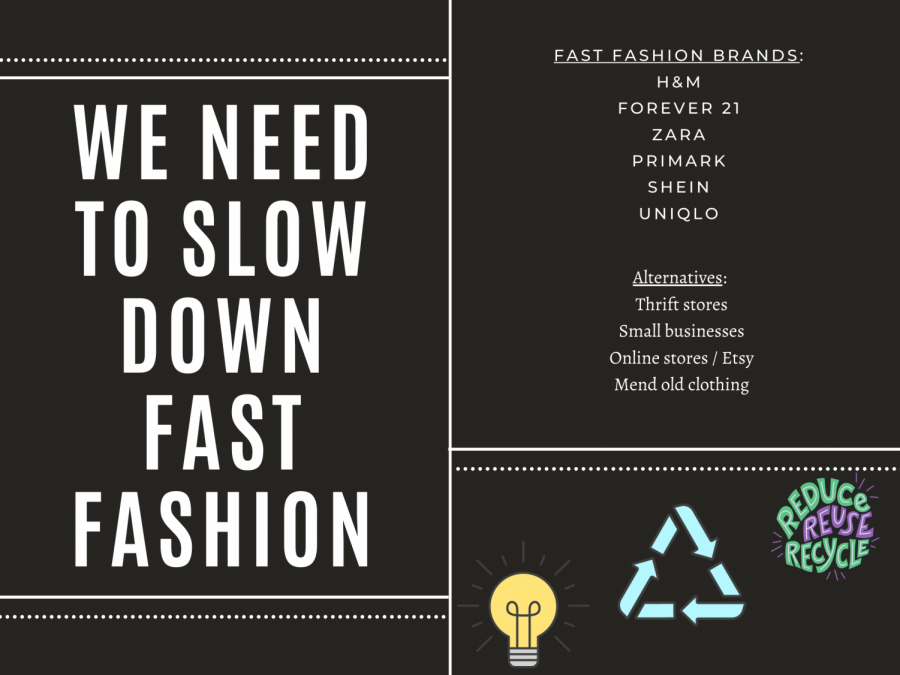We need to slow down fast fashion
Fast fashion is detrimental to the health of our environment and there are many alternatives to help slow down the impacts.
Have you shopped at H&M, Zara, Forever 21, Primark or Shein? If you said yes, I understand. Lots of teenagers shop there and currently have clothing in their wardrobe that was purchased at one or most of these places. But when we ask ourselves why global carbon emissions are so high, we need to consider the fast fashion industry, as it accounts for 10% of the total carbon emissions.
Fast fashion refers to clothing that is priced and produced cheaply. The fast fashion industry is a highly profitable business industry that mass produces products and makes a profit based on new and current trends. While the fast fashion industry produces cute and trendy clothing, it is detrimental to the health of our environment. Fashion production dries up water sources and pollutes rivers and streams. 85% of textiles go into dumps each year. Additionally, 20% of industrial pollution comes from textiles, fabric treatments and dying.
The fashion industry in general produces a lot of greenhouse gases through production, manufacturing and transportation of over millions of purchases every year. Polyester, nylon, rayon and others are fabrics made out of synthetic fibers that are used in most of our clothing. Synthetic fibers are made from fossil fuels and require much more energy to produce than natural fibers. Polyester and Nylon are by-products of petroleum. The production of these products emits nitrous oxide which is a greenhouse gas that is far more dangerous for the ozone layer than carbon dioxide. This is why it is so important for us to start wearing clothing made from natural fibers and sustainable fabrics instead.
While it is convenient to shop at these places, many alternatives are more sustainable and don’t feed into the fast fashion industry. Consider shopping at thrift stores, online sites such as Etsy, small businesses and even Instagram profiles that re-sell thrifted clothing and items such as @chris_sells_clothes. Another alternative to purchasing new and unsustainable clothing is to mend old clothing and shop from places that make clothes from more sustainable fabrics such as recycled cotton, organic hemp, organic linen, Tencel and Econyl.
Going to and shopping at thrift stores is becoming a trend among teens. It is a great way to recycle clothing and avoid feeding into fast fashion companies. No matter where you live there are always thrift stores to be found. To list a few in the Raleigh area, there is GCF Donation Center and Store, Rescue Missions Ministries Thrift Store, Plato’s Closet and Cause for Paws.
It can be difficult to make a sudden change to a sustainable closet, but what matters is that we all put in a little effort to do our part. If everyone takes a step in the right direction to make their wardrobe more sustainable, it would do wonders for our environment. So grab a friend, hit up a thrift store, and help decrease global carbon emissions. Let’s save the environment one recycled item of clothing at a time! Let me know your favorite thrift store, way to recycle clothing or alternative to fast fashion in the comments below.








